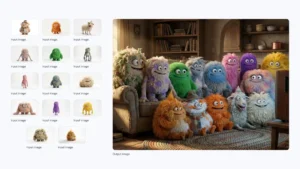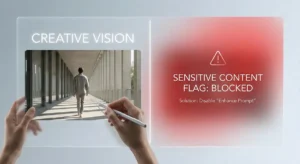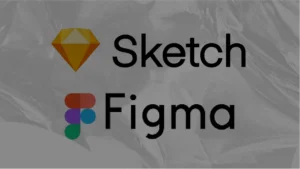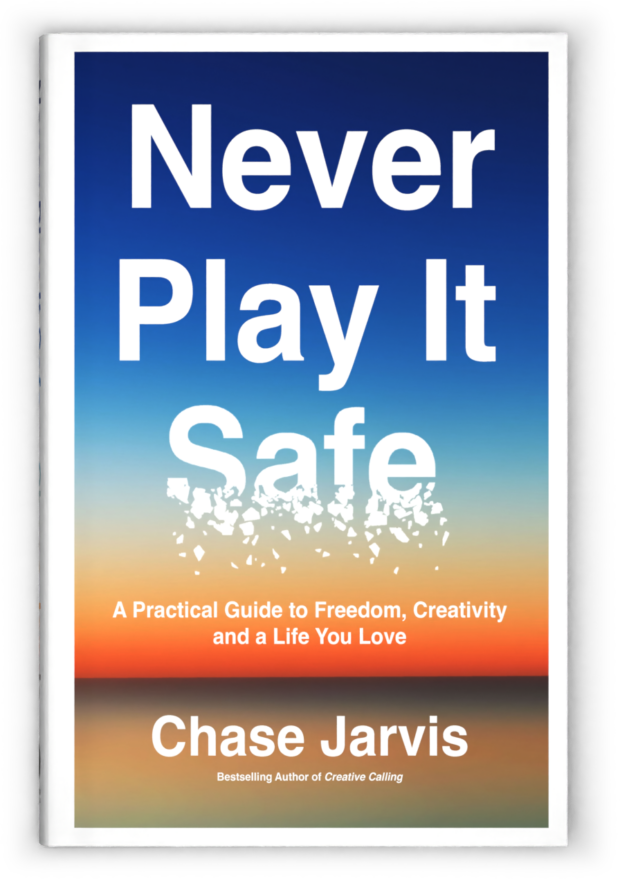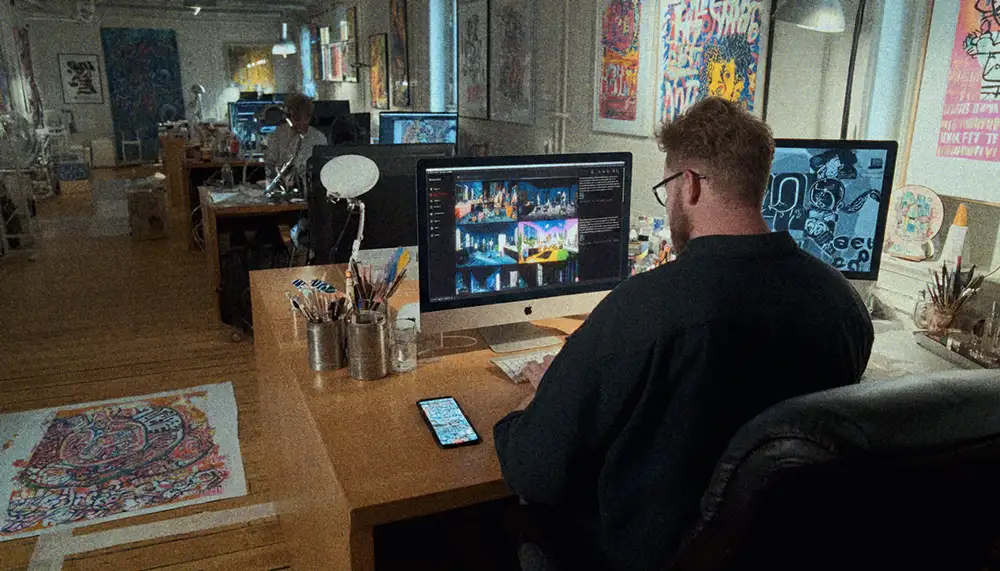
Midjourney is incredible, full stop. With its v7 model and a polished web interface, it’s a creative powerhouse that has set the bar for quality and aesthetic. For a long time, it’s been the undisputed king of AI image generation (and still is IMO).
But if you’re on a budget, it may not be an option when the “Mega Plan” is $1,152 a year.
That said, if you’re a pro, you’re not just looking for a free alternative to Midjourney. You need power, control, and tools that plug into your existing workflow.
Well, I’ve spent hundreds of hours in this new AI image generation ecosystem, and I’ve found that the real “alternative” to Midjourney isn’t one tool, but a combination – a whole new toolbox.
Forget the simple “local vs. cloud” split. The best free Midjourney alternatives for creative pros fall into four distinct categories based on what you need to do.
Direct Midjourney competitors (complete, pro workflow apps)
These are for the working pro who wants power and control without the hassle of a complex local setup. They run in your browser but are built from the ground up for creative production. Most are paid, but have a free tier.
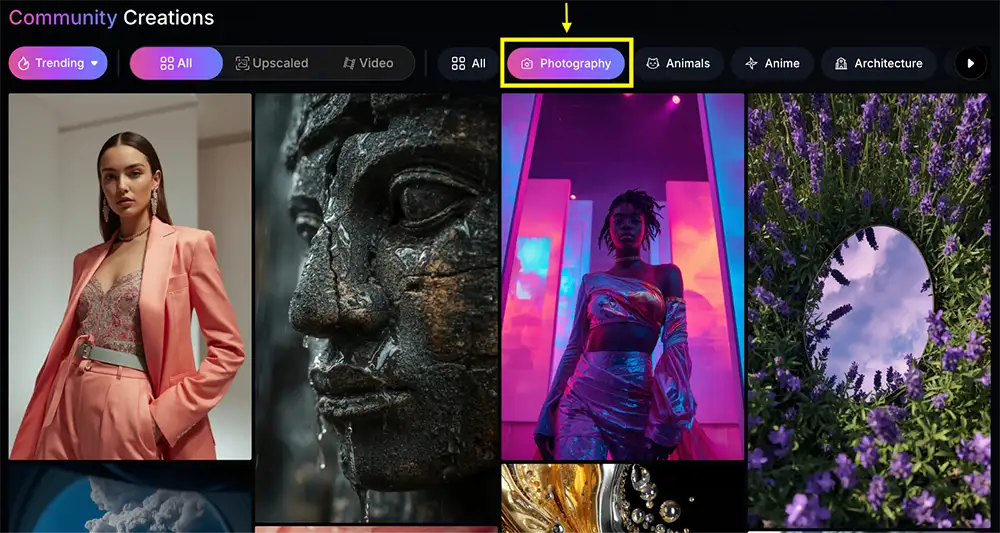
Leonardo.Ai
This is arguably the strongest direct competitor to Midjourney on the market. Leonardo’s free tier is generous (150 daily tokens) and gives you access to a staggering number of pro features.
- Why it’s a pro tool: It’s not just a prompt box. It has an “AI Canvas” for inpainting (fixing details) and outpainting (expanding the image), custom-trained models for specific styles (e.g., game assets, photorealism, isometric art), and a “Prompt Magic” feature that adds serious punch to your ideas.
- Best for: Game artists, concept designers, and anyone who needs to maintain a consistent visual style across multiple generations.
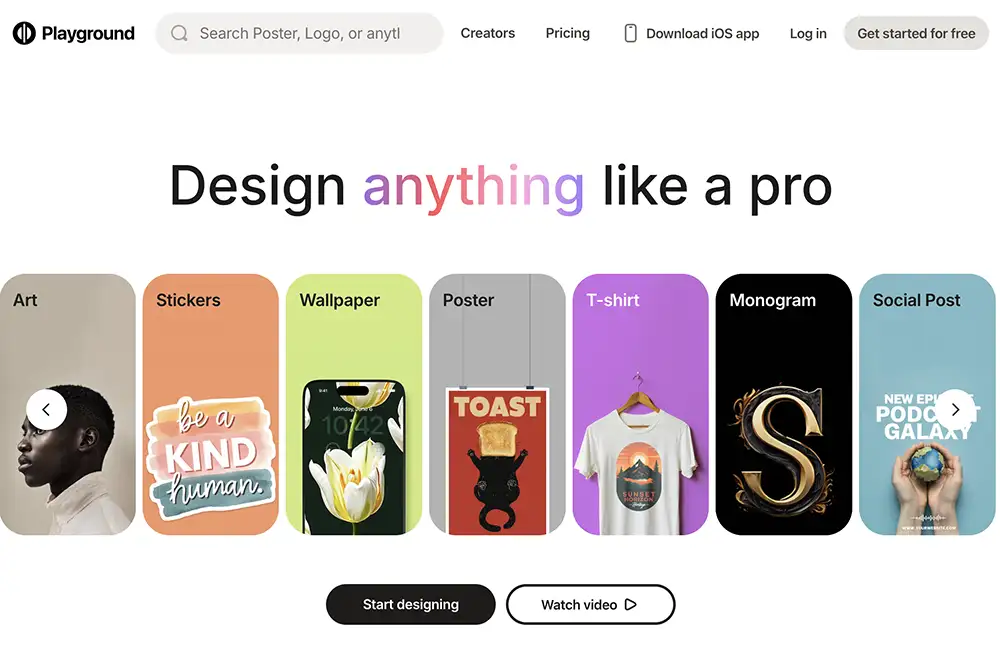
Playground AI
Playground is a bit different because it’s not just an image generator. It works by starting with what you want to make (a t-shirt, poster, social post, etc), then using that as the guardrails to create the image.
Playground’s biggest strength is its free tier: you get to create up to 1,000 images per day, for free, with commercial use included. For pros, this isn’t about “free stuff”; it’s about the power of volume. You can iterate on an idea hundreds of times, exploring every possible angle, without worrying about burning through credits.
- Why it’s a pro tool: The sheer speed and volume of iteration are unmatched. Its built-in canvas editor is also incredibly powerful, allowing you to edit and expand your creations in one place.
- Best for: Mood boarding, rapid concepting, social media content creators, and any pro who needs to find that one “perfect” shot through sheer volume.
Check out Playground here
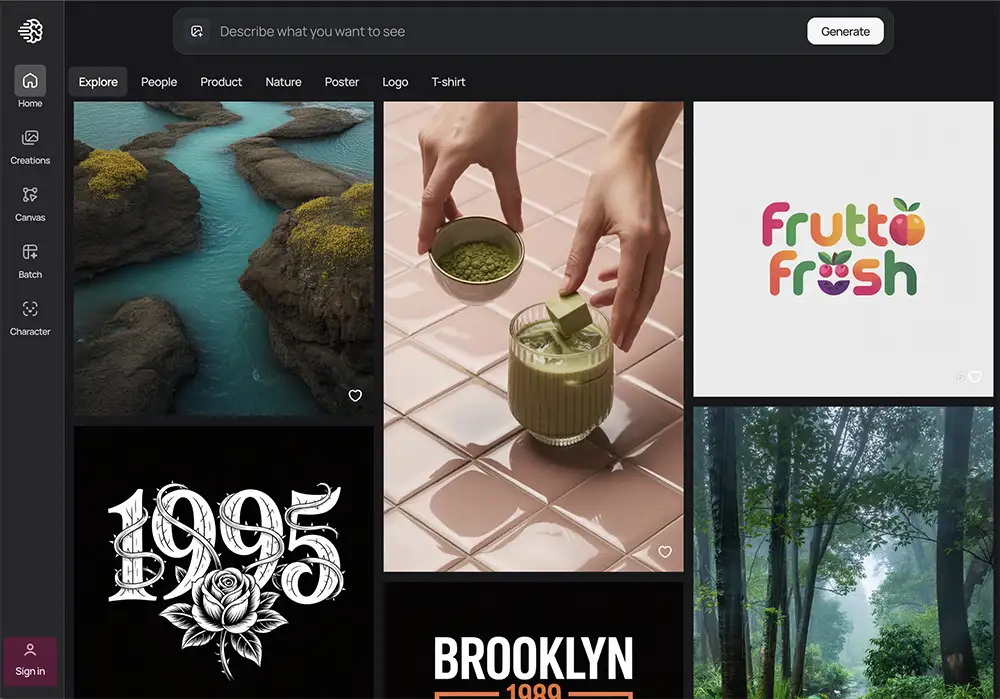
Ideogram– the typography specialist
We’ve all seen AI’s Achilles’ heel: mangled, unreadable text. Ideogram burst onto the scene by (mostly) solving this. It has a remarkable ability to render legible and often beautiful typography within an image.
- Why it’s a pro tool: It solves a specific, massive problem for designers. Its “Magic Prompt” feature also helps add creative details, but the real magic is seeing your text-based ideas come to life.
- Best for: Logo designers, poster artists, brand specialists, and marketers creating social media graphics.
Check out Ideogram here
Local AI image generators
This is where the real power users live. This category isn’t one “app” but a collection of user interfaces (UIs) for running the open-source Stable Diffusion model on your own computer vs in the cloud like Midjourney, Nano Banana, etc.
Very powerful, but also a very steep learning curve. Be prepared to put in hours of learning before you create your first decent image.
Why bother? Three reasons:
- 100% Free: No tokens, no subscriptions. Ever. (Though it does use your computer’s GPU).
- 100% Privacy: Your work never leaves your machine. This is critical for sensitive client projects.
- 100% Control: No filters. Total customization. You can build, fine-tune, and combine models to create a style that is uniquely yours.

ComfyUI: The Pro’s Pro for custom workflows
This is the one you mentioned, and it’s the new standard for serious professionals. ComfyUI is not a simple app; it’s a node-based visual interface. It looks like a complex flowchart because it is one. You visually connect every part of the AI’s “brain”, the model, the prompt, the sampler, the upscaler.
Be aware, it’s NOT for the faint of heart – it’s highly technical and doesn’t hold your hand.
- Why it’s a pro tool: The learning curve is steep, but the power is limitless. Every workflow is perfectly reproducible and shareable. You can build complex pipelines that, for example, take a sketch, create a base image, send it to an upscaler, and add detail with a second model, all in one click.
- Best for: Technical artists, animators, and studios that need to build a custom, repeatable production pipeline.
Check out ComfyUI here

Fooocus – the ‘Midjourney Feel’ on your computer
If ComfyUI is a 747 cockpit, Fooocus is a simple, elegant glider. It’s also a free, local UI for Stable Diffusion XL aka SDXL, but it was designed to be the antidote to ComfyUI’s complexity. It gives you a clean, minimal interface that feels just like Midjourney, a prompt box and a “Generate” button.
- Why it’s a pro tool: It hides all the complex settings and gives you gorgeous, high-quality results “out of the box.” It’s the perfect blend of Midjourney’s simplicity with the privacy and freedom of running locally.
- Best for: Photographers and illustrators who want local control and privacy without the steep technical learning curve.
Check out Fooocus here

Forge
This is the original power-user UI that started it all (as a faster, more optimized version of Automatic1111). Its strength is its massive, mature ecosystem. There is a community-built extension for everything, from 3D model generation to the deepest ControlNet plugins (which let you copy a pose or composition from another image).
Definitely NOT user-friendly unless you’re very technical, but it’s a powerful option for those who are. Some may also find the UI un-inspiring but that’s a matter of personal taste.
- Best for: The “tinkerer,” the experimental artist, and anyone who wants access to the widest possible range of community-built features.
Check out Forge here
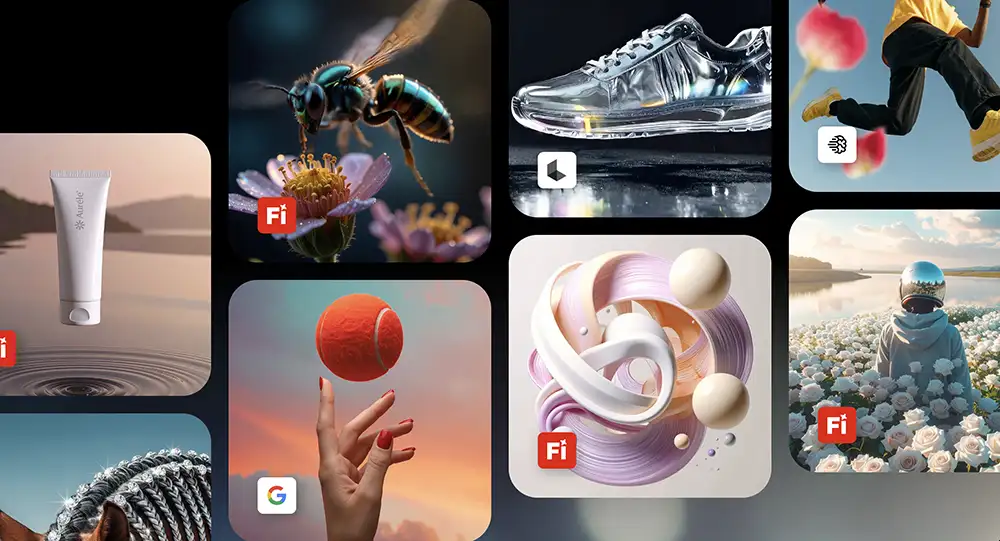
Adobe Firefly (a class of its own)
For many working pros, the best AI tool is the one that lives inside the software you already use- and this is the unique advantage of Firefly (the default model used for most of Adobe’s AI features).
It’s “free” if you’re already in the Adobe Creative Cloud ecosystem. And because it was trained on the Adobe Stock library and public domain images, it’s free of many of the ethical or IP issues that may be a concern with other apps.
- Why it’s a pro tool: This is the only generator you can use for client work with a high degree of legal confidence. Its integration into Photoshop via Generative Fill and Generative Expand has fundamentally changed professional photo-editing and compositing workflows forever. It’s not a Midjourney alternative; it’s a new, essential step in the production process.
- Best for: Photographers, graphic designers, art directors, and any creative professional living in the Adobe ecosystem.
Check out Adobe Firefly here
Chatbot image generators
These are the chatbots we all know. For a creative pro, these are rarely the tools you use to create a final image. Their true power is as a tireless, world-class brainstorming partner.
ChatGPT (DALL-E 3)
The magic of using DALL-E 3 inside ChatGPT is its conversational nature. You can refine an idea in plain English.
- “Show me a logo for a coffee shop.”
- “I like the third one. Make it more minimalist and use a 1950s color palette.”
- “Now show me that logo on a mockup of a coffee cup.”
- Why it’s a pro tool: It’s like having an art director and a junior designer in one. It’s for finding the idea, not necessarily for executing the final pixel-perfect asset.
- Best for: Writers, creative directors, and anyone in the early stages of mood-boarding and concepting.
Check out ChatGPT/Dall-E 3 here
Gemini & Meta AI
Google’s Gemini (using its Imagen 3 model) and Meta’s AI are lightning-fast idea machines, with Grok Imagine as the newest entrant.
- Why it’s a pro tool: Their power is speed and access. When you have a creative block, you can fire off a quick “What if the campaign was set in a retro-futuristic city?” or “What if the subject was made of glass?” and get four high-quality concepts back in seconds.
- Best for: Breaking creative blocks and super-fast, “what if” ideation.
Check out Gemini here (and my thoughts on Nano Banana here)
See also Meta AI here (and my Meta AI review/tutorial)
And Grok Imagine here
Final Thoughts: Stop Fiddling, Start Building
The a-ha moment for me was realizing the goal isn’t to find a 1-to-1 replacement for Midjourney. The goal is to build a new, more powerful, and more flexible toolbox.
A real-world pro workflow might look like this:
- Brainstorm the initial concept and script with ChatGPT or Gemini
- Generate a dozen high-quality base images in Leonardo.Ai.
- Take your favorite and run it through a custom model in ComfyUI to get a unique, high-res style.
- Finally, bring that image into Photoshop and use Firefly (Generative Fill) to remove a distracting element and expand the canvas.
Stop looking for the one tool to rule them all. The power is in knowing which tool to use for which job. The “alternative” to Midjourney is a smarter, more integrated creative process.
Now, go build your new workflow. Go create.
PS – If you’re looking for a guide to help you build the life and career you’ve always wanted, the Seven Levers for Life is a free 7-day email course on just that.
PPS – Here’s how to use Midjourney and Nano Banana together


